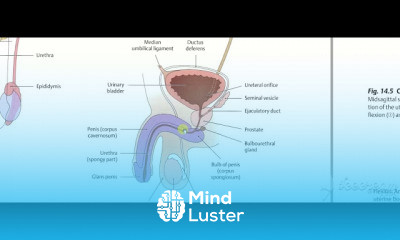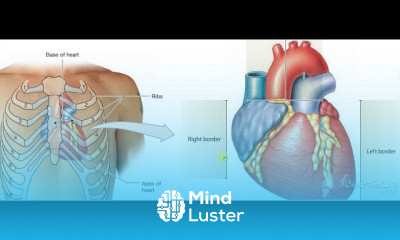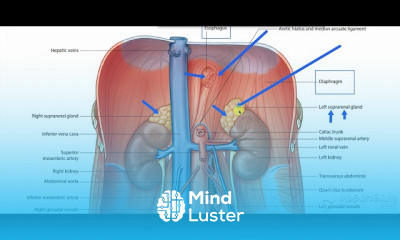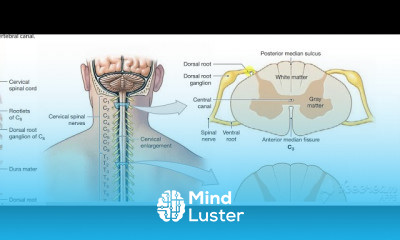Hypothalamus Pituitary integration 3
Share your inquiries now with community members
Click Here
Sign up Now
Lessons List | 18
Lesson
Comments
Related Courses in Medical
Course Description
Pituitary tumors are abnormal growths that develop in your pituitary gland. Some pituitary tumors result in too much of the hormones that regulate important functions of your body. Some pituitary tumors can cause your pituitary gland to produce lower levels of hormones.
Most pituitary tumors are noncancerous (benign) growths (adenomas). Adenomas remain in your pituitary gland or surrounding tissues and don't spread to other parts of your body.
There are various options for treating pituitary tumors, including removing the tumor, controlling its growth and managing your hormone levels with medications. Your doctor may recommend observation — or a ''wait and see'' approach.
Not all pituitary tumors cause symptoms. Sometimes they are identified incidentally on an imaging test such as an MRI or CT performed for some other reason. Pituitary tumors that make hormones (functioning) can cause a variety of signs and symptoms depending on the hormone they produce. The signs and symptoms of pituitary tumors that don't make hormones (nonfunctioning) are related to their growth and the pressure they put on other structures.
Large pituitary tumors — those measuring about 1 centimeter (slightly less than a half-inch) or larger — are known as macroadenomas. Smaller tumors are called microadenomas. Because of the size of macroadenomas, they can put pressure on the normal pituitary gland and nearby structures.
Signs and symptoms related to tumor pressure
Signs and symptoms of pressure from a pituitary tumor may include:
Headache
Vision loss, particularly loss of peripheral vision
Trends
MS Excel
ChatGPT essentials for beginners
Learning English Speaking
Video editing with adobe premiere
CompTIA security certification for beginners
Javascript interview questions and answers
Python programming language
Creating bitmap images from scratch
English greetings and responses
App in Android
Building a Website with HTML CSS
Highest Paying IT certifications
C Programming from scratch
Cyber security roadmap for beginners
AutoCAD Programming in autocad for beginners
ChatGPT high level
Guitar
Aprender a Programar desde
Graphic design rules for beginners
python programming essentials for beginners
Recent
ChatGPT essentials for beginners
CompTIA security certification for beginners
Highest Paying IT certifications
Javascript interview questions and answers
Azure fundamentals certification exam
IT certification exams Preparation
Cyber security roadmap for beginners
AWS certification Learning Paths for beginner
Google Cybersecurity Professional Certificate
Cisco IT certifications for beginners
IBM data analyst Professional certificate
Top Programming Languages to Learn in 2024
Building a Website with HTML CSS
C Programming from scratch
Creating Unhackable Passwords with C
Most dangerous hacking gadgets in 2024
Nessus vulnerability scanning for beginners
Designing VB NET booking system form layout
Building a shark attack game in scratch
Programming with VBA for beginners


















